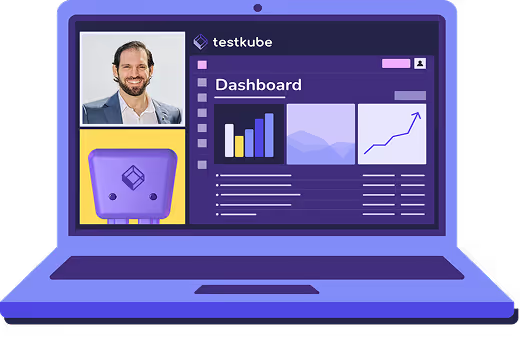Table of Contents
What Does Front-End Testing Tools Mean?
Front-end testing tools are designed to validate the user interface and client-side behavior of web applications. They ensure that each component, page, and user flow behaves as expected. These tools can test everything from isolated components and accessibility to complete end-to-end (E2E) scenarios that simulate real user interactions. Front-end testing ensures that changes in code, dependencies, or browsers do not introduce visual or functional regressions that degrade user experience.
Why It Matters
The front end is where users experience your product. Even minor visual or functional issues can erode trust, increase bounce rates, and impact conversion.
Front-end testing tools help developers catch these problems before release by automating verification across devices, browsers, and environments.
They are especially important in continuous delivery pipelines, where small UI changes ship frequently and need immediate validation.
How It Works
Front-end testing tools run in the browser or a headless environment, simulating user interactions such as clicks, form entries, or navigation.
Some tools focus on individual components, while others handle full workflows that include API calls and backend interactions.
Modern front-end testing solutions integrate with CI/CD pipelines and often support features like hot reloading, automatic waits, and visual diffing to simplify developer workflows.
Common Types of Front-End Testing and Associated Tools
1. Unit Testing
Tests individual functions or components in isolation.
Tools: Jest, Enzyme (for React), Vitest.
2. Component Testing
Verifies rendering and behavior of UI components.
Tools: React Testing Library, Vue Test Utils, Cypress Component Testing.
3. End-to-End (E2E) Testing
Simulates complete user flows, validating both UI and backend interactions.
Tools: Cypress, Playwright, Selenium, TestCafe, WebdriverIO.
4. Cross-Browser Testing
Ensures consistent functionality across browsers and devices.
Tools: Selenium, Playwright, LambdaTest, BrowserStack.
5. Visual Regression Testing
Detects unintended visual differences through screenshot comparison.
Tools: Applitools, Percy, Chromatic.
6. Accessibility Testing
Validates compliance with accessibility standards like WCAG.
Tools: Axe-core, Lighthouse, Pa11y.
7. Performance Testing
Measures speed, responsiveness, and load performance.
Tools: Lighthouse, WebPageTest, k6.
Key Benefits
- Detects UI and usability issues early in development
- Ensures consistent user experience across browsers and devices
- Automates time-consuming validation tasks
- Reduces visual and functional regressions in production
- Enables continuous testing for front-end deployments
How It Relates to Testkube
Front-end testing tools like Cypress, Playwright, and Selenium are powerful for validating the user interface, but they often become difficult to manage at scale. Testkube provides a unified orchestration layer for running these tools inside Kubernetes environments.
- Centralized Orchestration: Run front-end test suites such as Cypress, Playwright, or Selenium directly inside your cluster
- Environment Parity: Use the same configuration locally, in CI/CD, or across environments to eliminate flakiness
- Scalable Execution: Parallelize browser tests and distribute workloads across multiple clusters or regions
- Unified Visibility: Aggregate results, logs, and artifacts from front-end frameworks in one control plane
- CI/CD Independence: Trigger front-end tests on demand or by events, without overloading pipelines
By orchestrating front-end testing tools through Testkube, teams gain scalability, observability, and reproducibility for modern web testing workflows.
Best Practices
- Use component testing early to catch issues before integration
- Combine unit, E2E, and visual testing for complete coverage
- Automate accessibility and performance checks in every release
- Run cross-browser tests in parallel to speed up validation
- Centralize reporting to monitor UI health trends over time
Common Pitfalls
- Relying solely on manual visual inspection
- Running E2E tests only in CI/CD, causing long build times
- Ignoring browser or device differences during testing
- Treating accessibility testing as an afterthought
- Lacking orchestration, leading to flaky or inconsistent results
Frequently Asked Questions (FAQs)
What are front-end testing tools used for?
They automate validation of the user interface, ensuring functionality, visual consistency, and accessibility across browsers and devices.
How is front-end testing different from back-end testing?
Front-end testing focuses on the user-facing interface, while back-end testing verifies APIs, databases, and server-side logic.
Can Testkube run front-end testing frameworks?
Yes. Testkube can run frameworks such as Cypress, Playwright, and Selenium in Kubernetes, providing scalability and centralized management.
Why use Kubernetes for front-end testing?
Running browser-based tests in Kubernetes allows for parallelization, consistent environments, and easy scaling across clusters.
Does Testkube replace front-end testing tools?
No. Testkube orchestrates existing tools, making it easier to run, scale, and monitor them consistently.


